Java AWT (Abstract Windowing Toolkit) is an API for developing GUI applications in Java. It contains components like buttons, text fields, labels etc. that are platform-dependent and heavyweight. The AWT hierarchy includes containers like Frame and Panel that can hold other components. Common methods like add(), setSize() and setLayout() are used to manage components. Event handling in AWT involves implementing listener interfaces, registering components with listeners, and placing event code in the same class, a separate class, or anonymously.
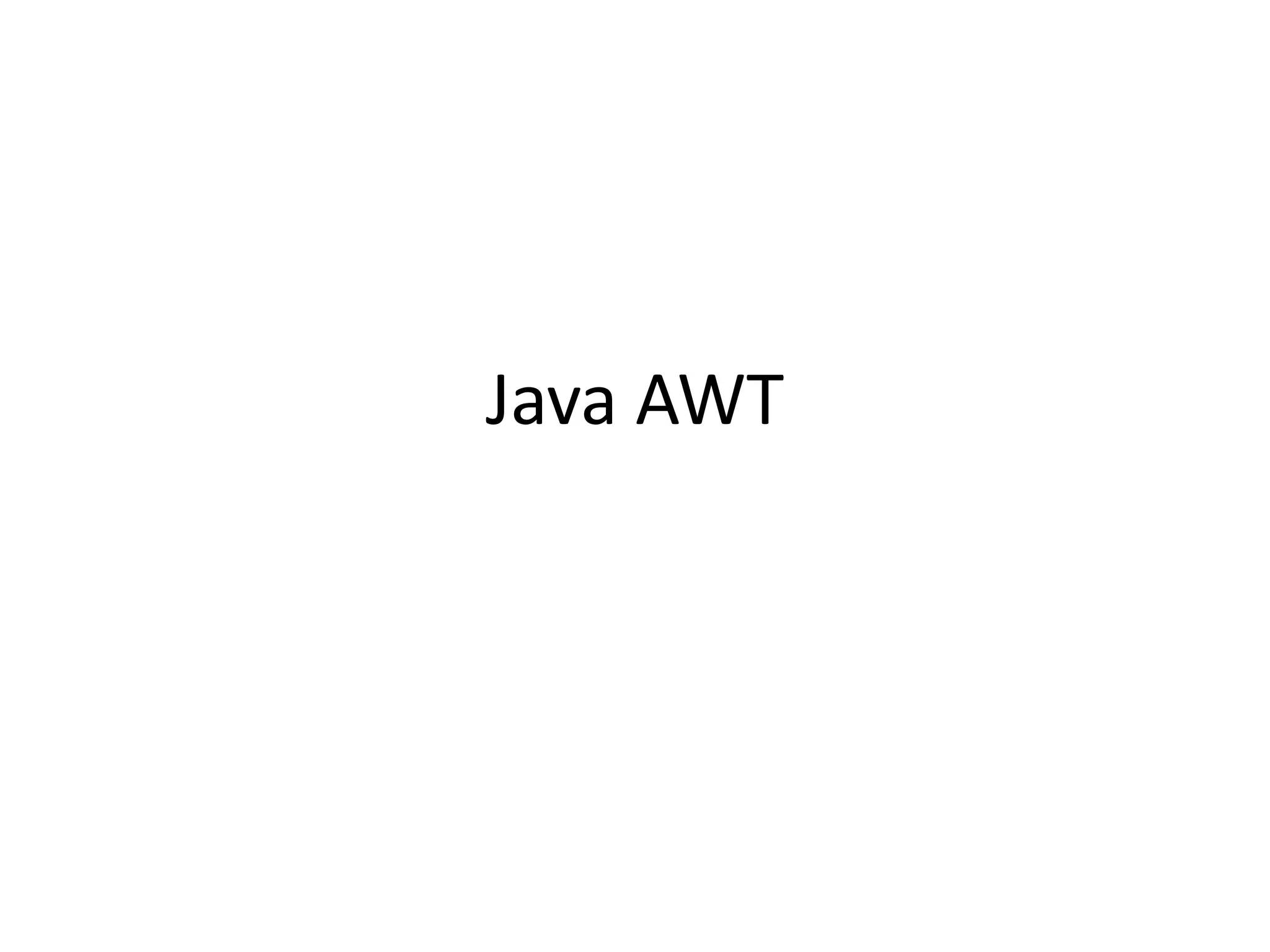
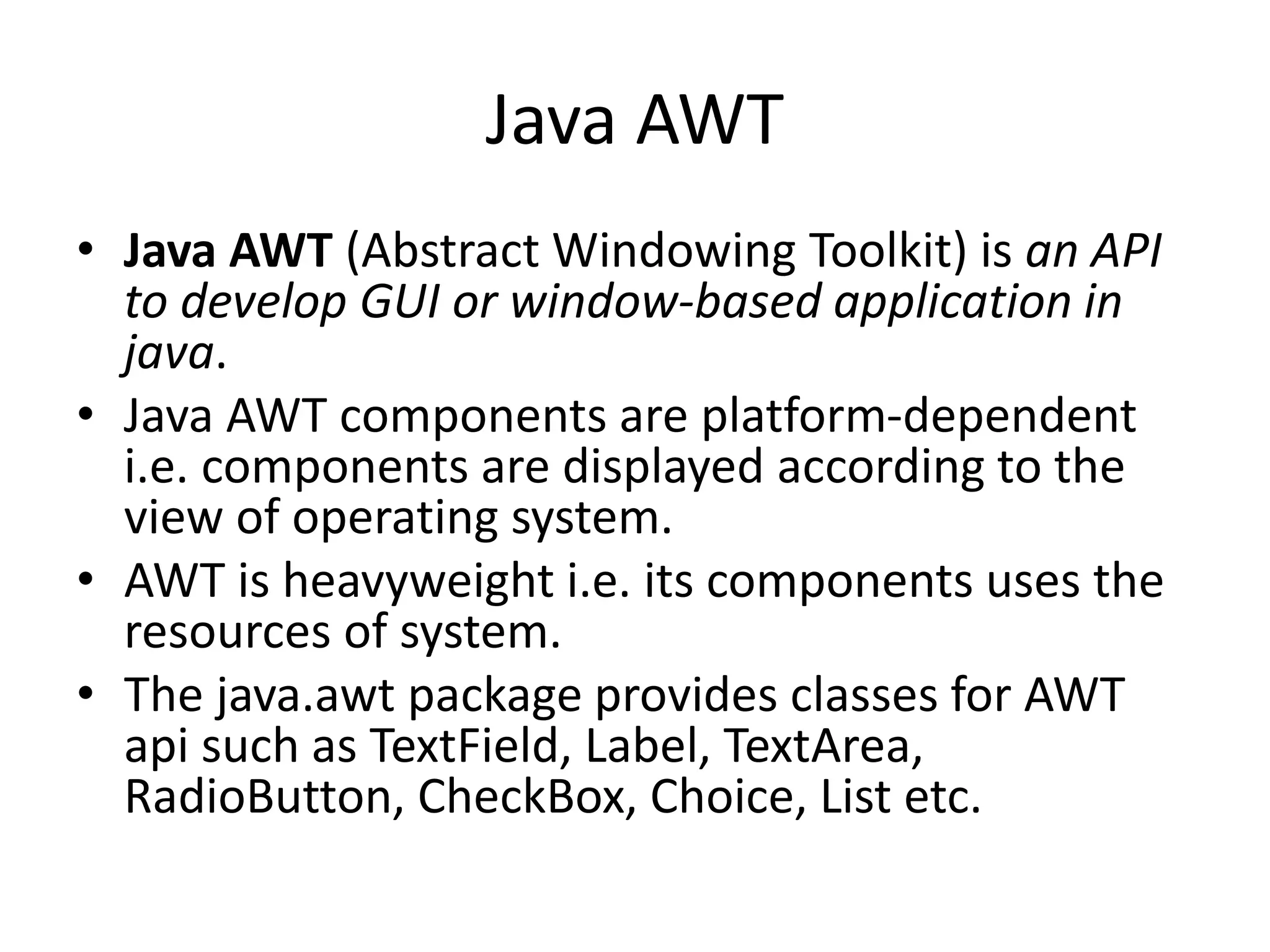
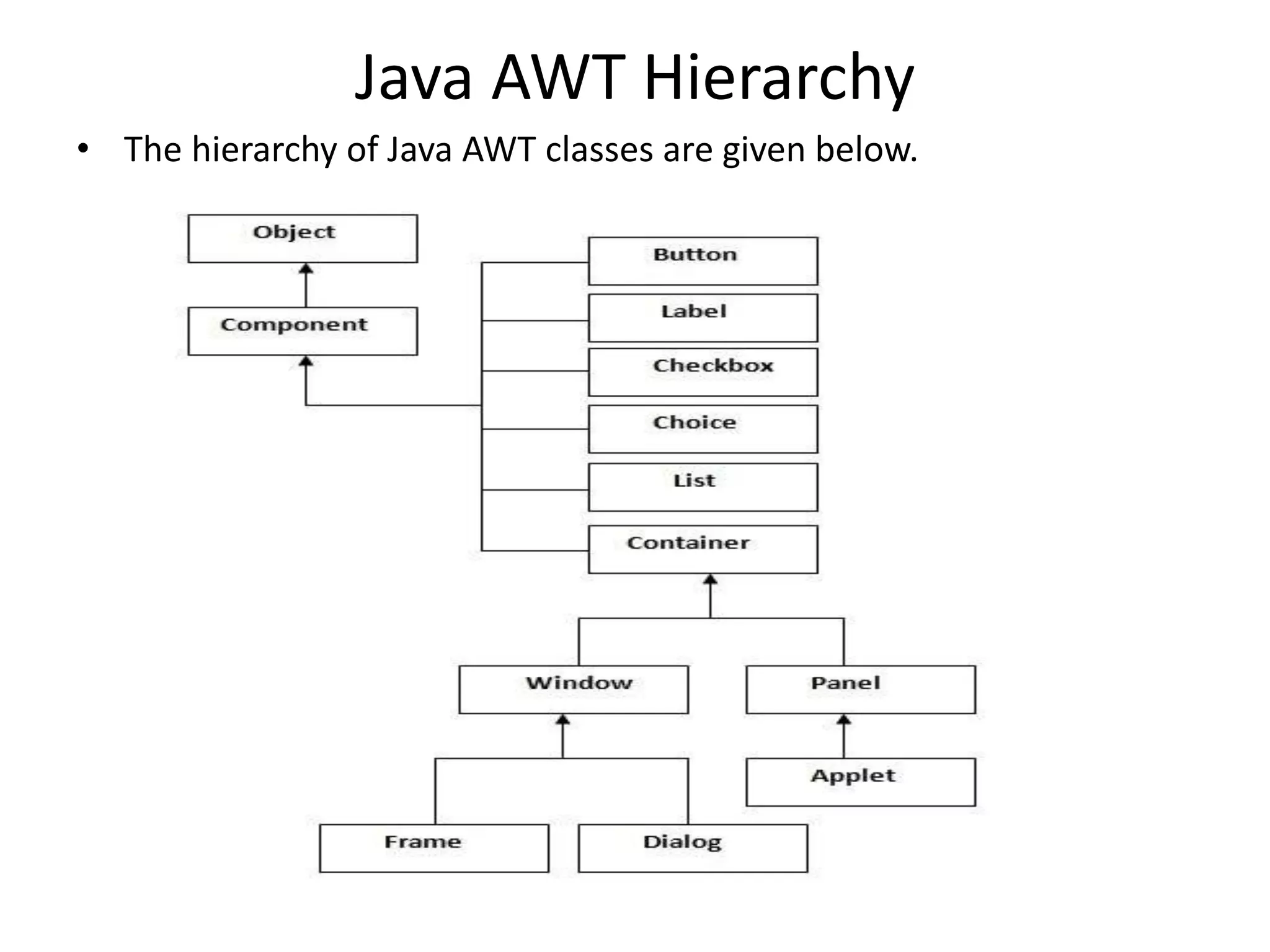
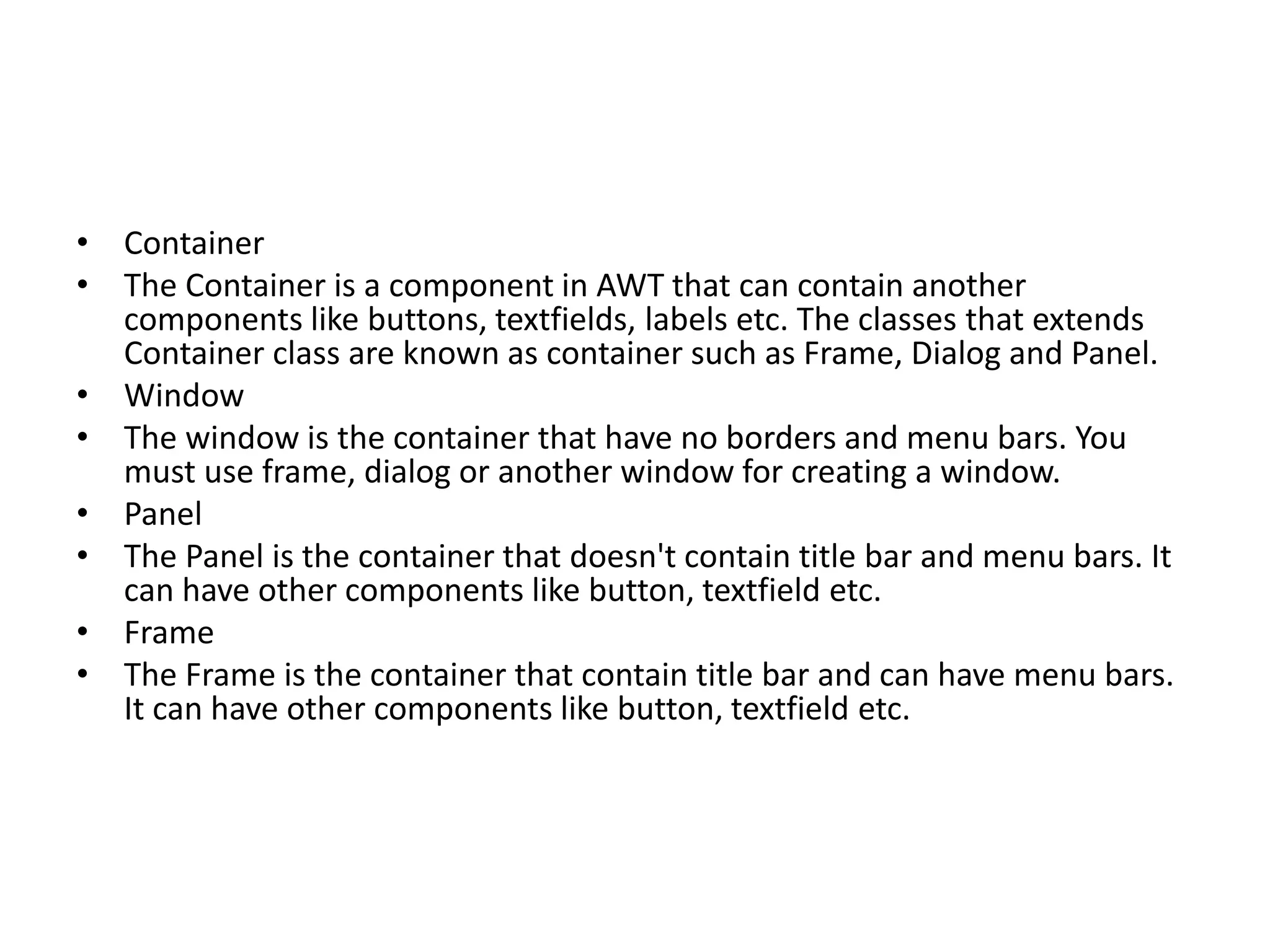
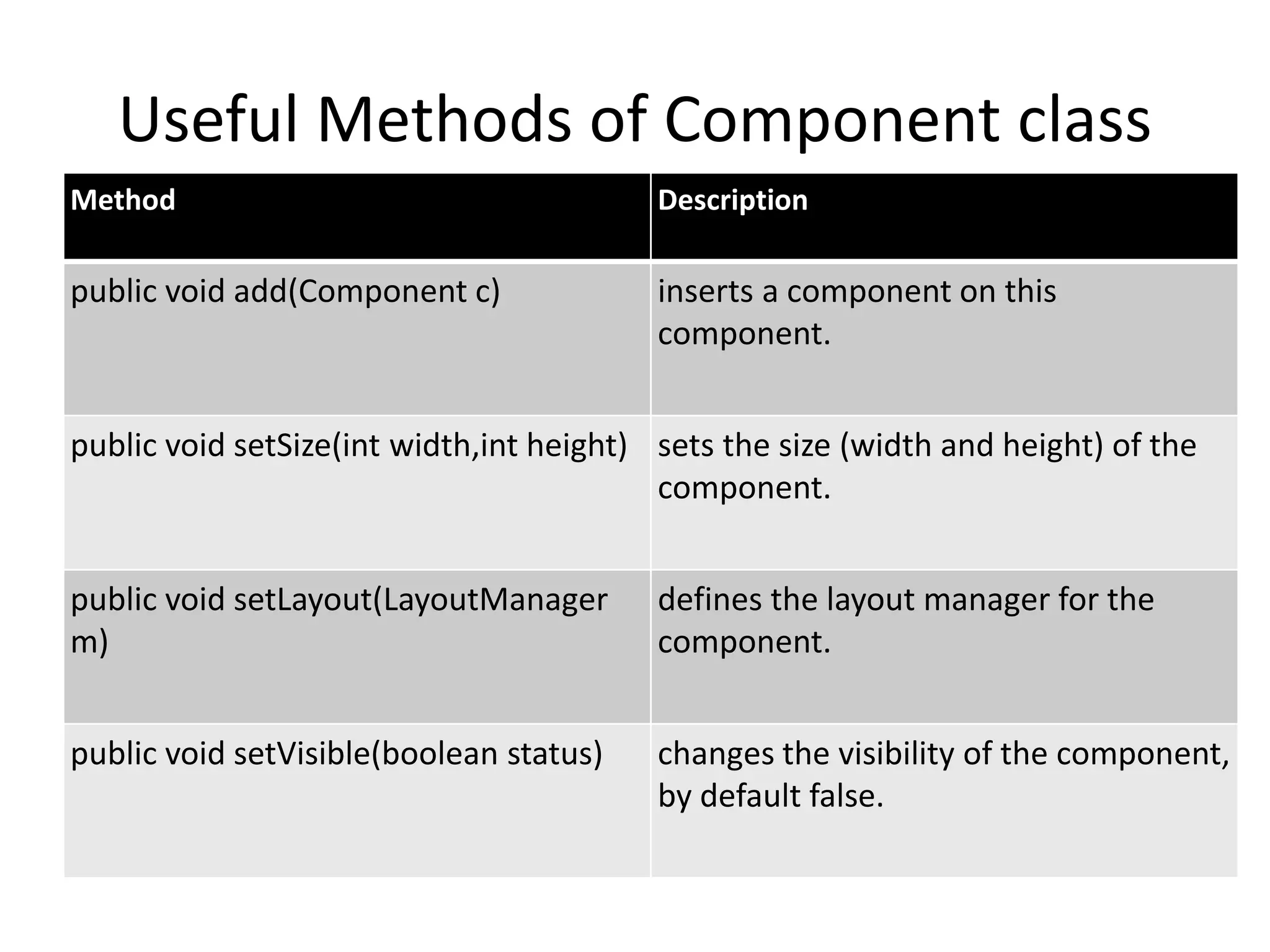
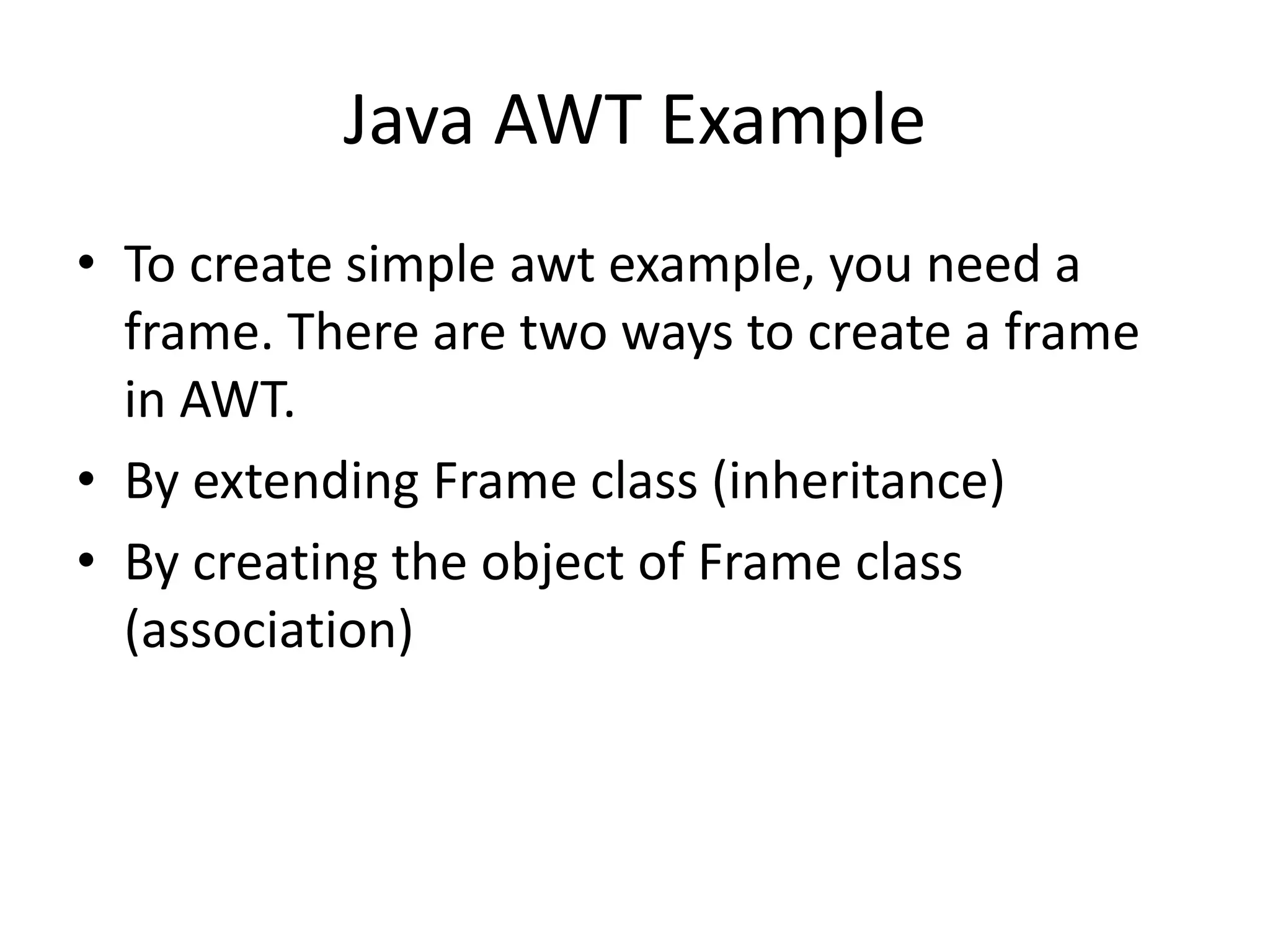
![Simple example of AWT by inheritance import java.awt.*; class First extends Frame{ First(){ Button b=new Button("click me"); b.setBounds(30,100,80,30);// setting button position add(b);//adding button into frame setSize(300,300);//frame size 300 width and 300 height setLayout(null);//no layout manager setVisible(true);//now frame will be visible, by defaul t not visible } public static void main(String args[]){ First f=new First(); }}](https://image.slidesharecdn.com/javaawt-180310133848/75/object-oriented-programming-examples-7-2048.jpg)
![Simple example of AWT by association import java.awt.*; class First2{ First2(){ Frame f=new Frame(); Button b=new Button("click me"); b.setBounds(30,50,80,30); f.add(b); f.setSize(300,300); f.setLayout(null); f.setVisible(true); } public static void main(String args[]){ First2 f=new First2(); }}](https://image.slidesharecdn.com/javaawt-180310133848/75/object-oriented-programming-examples-8-2048.jpg)
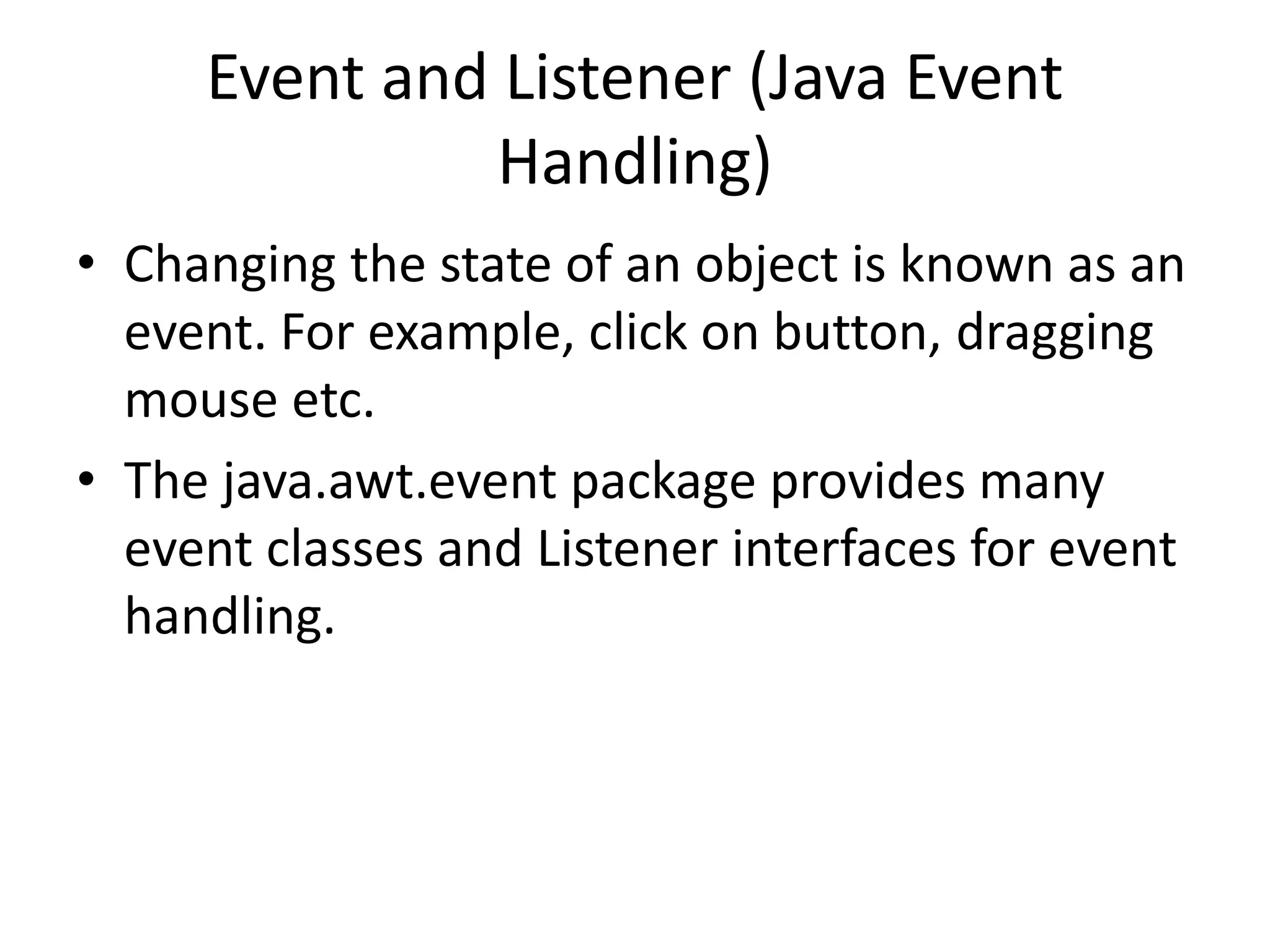
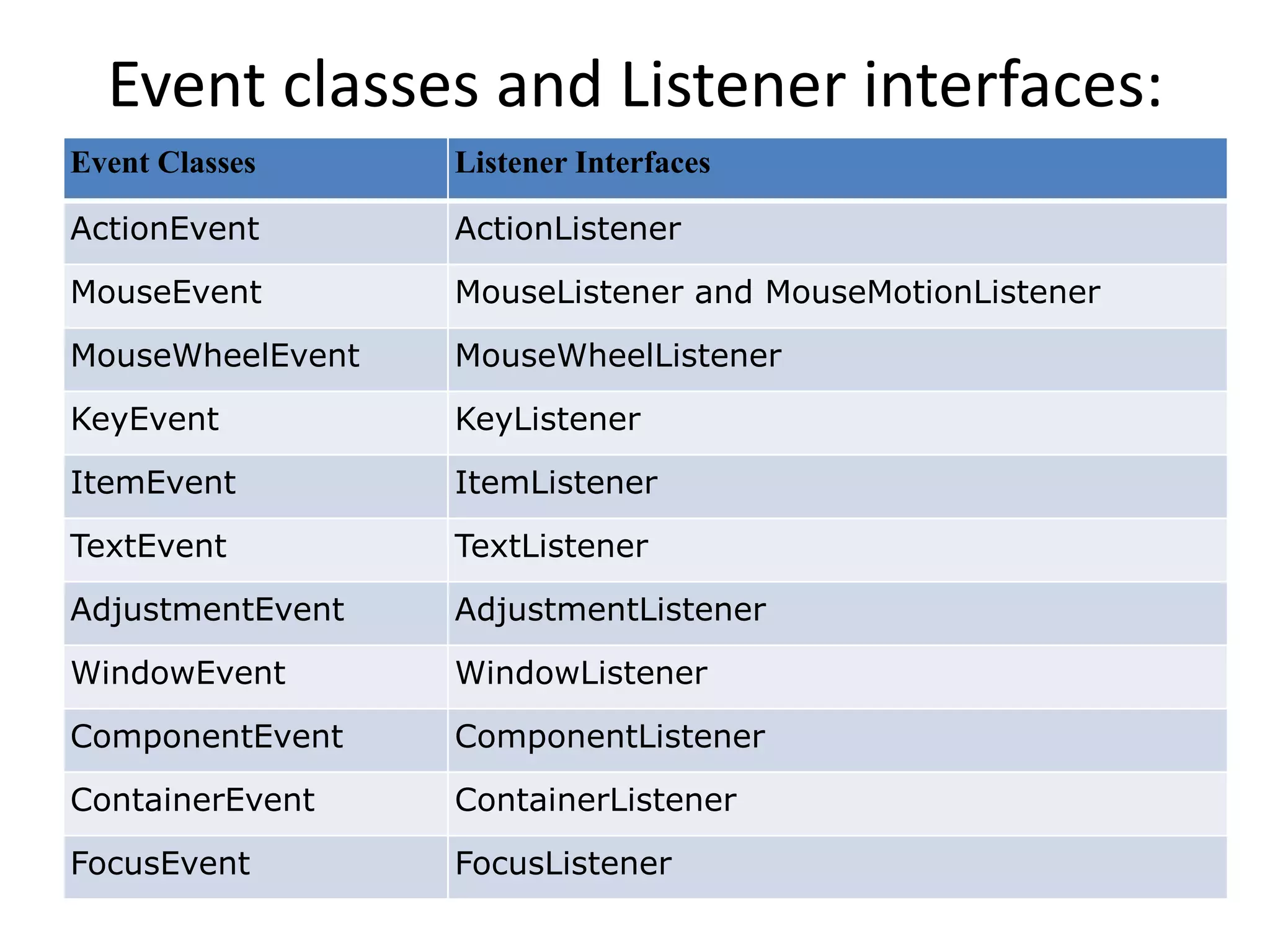
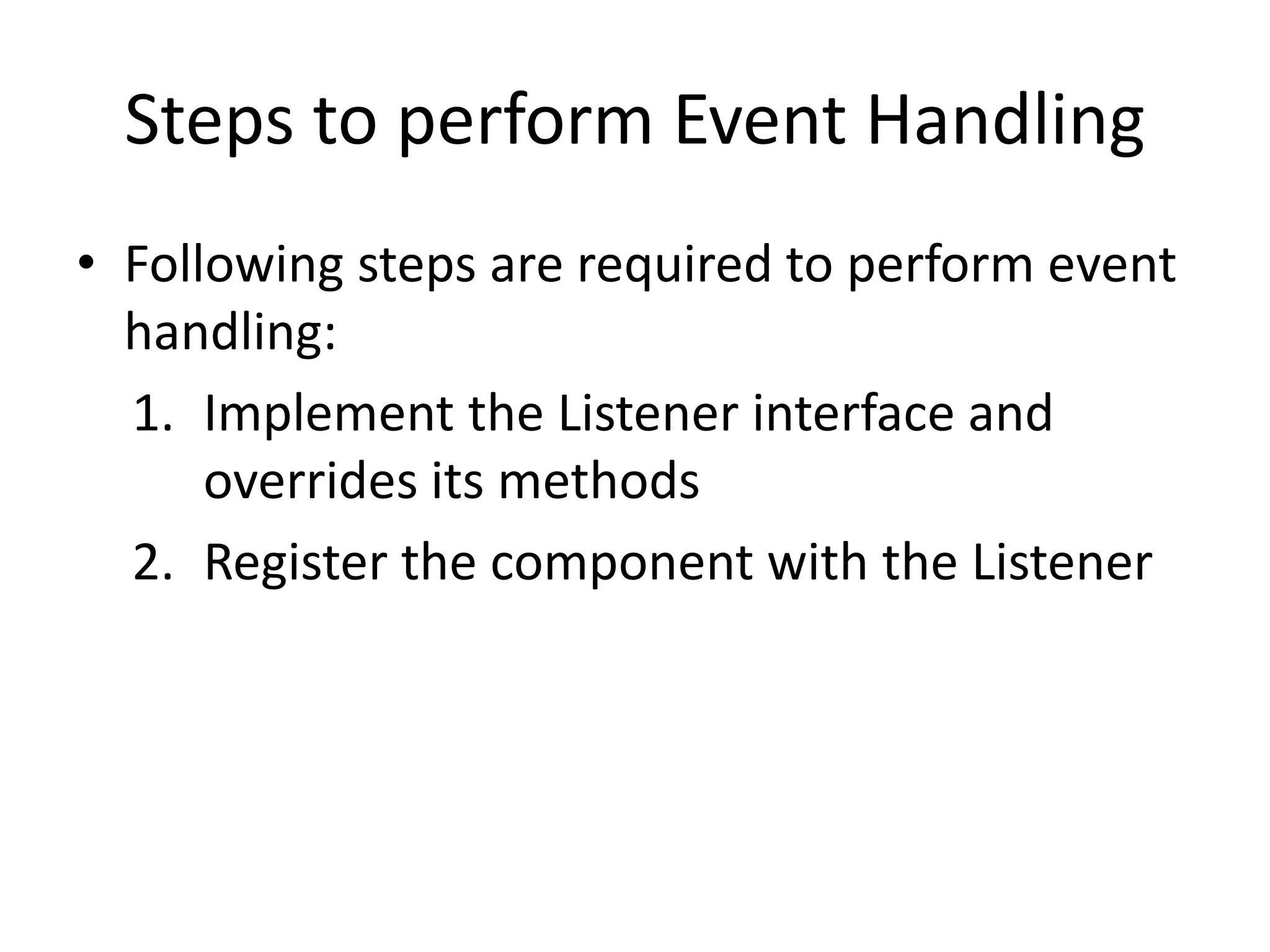
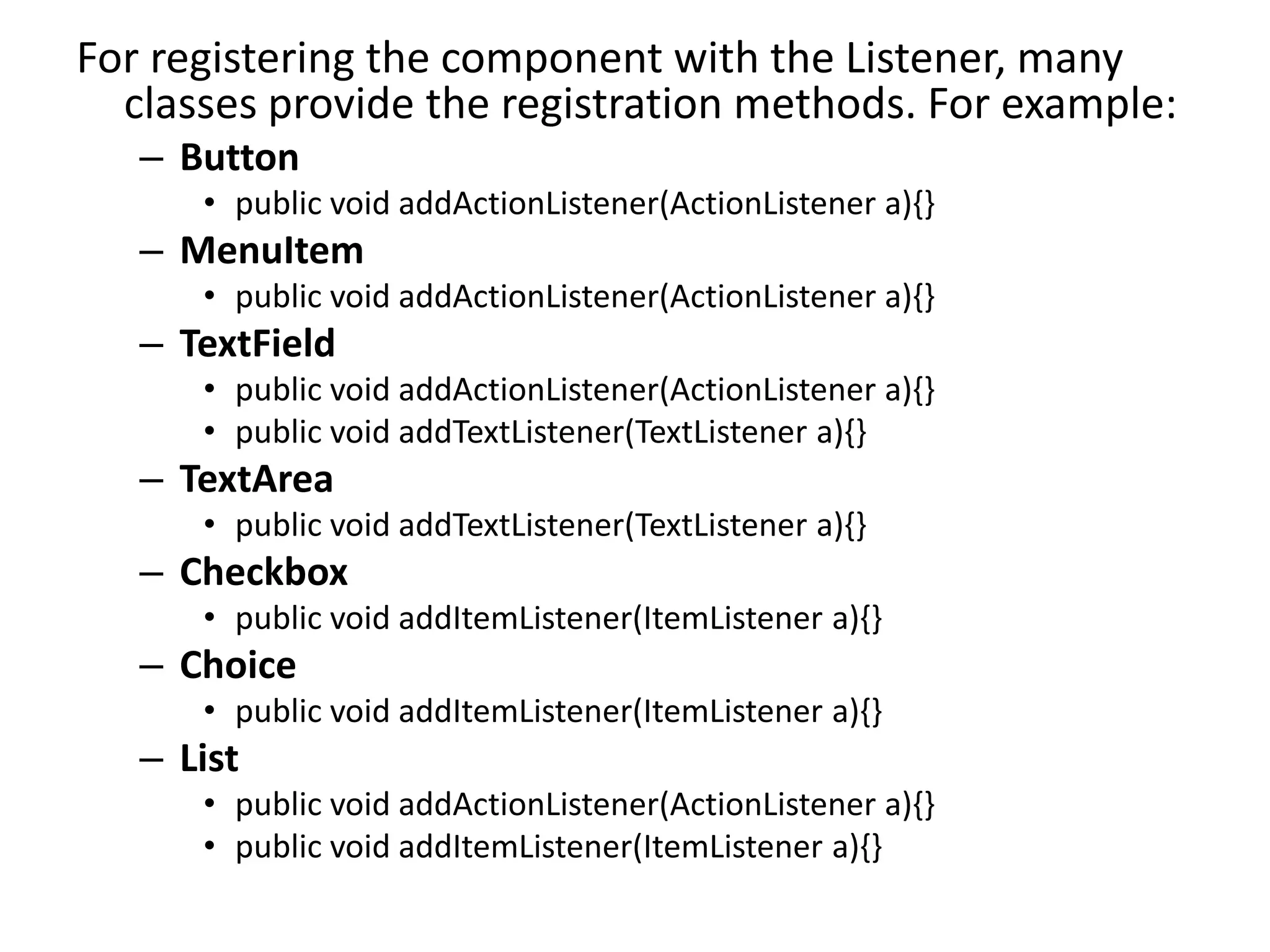
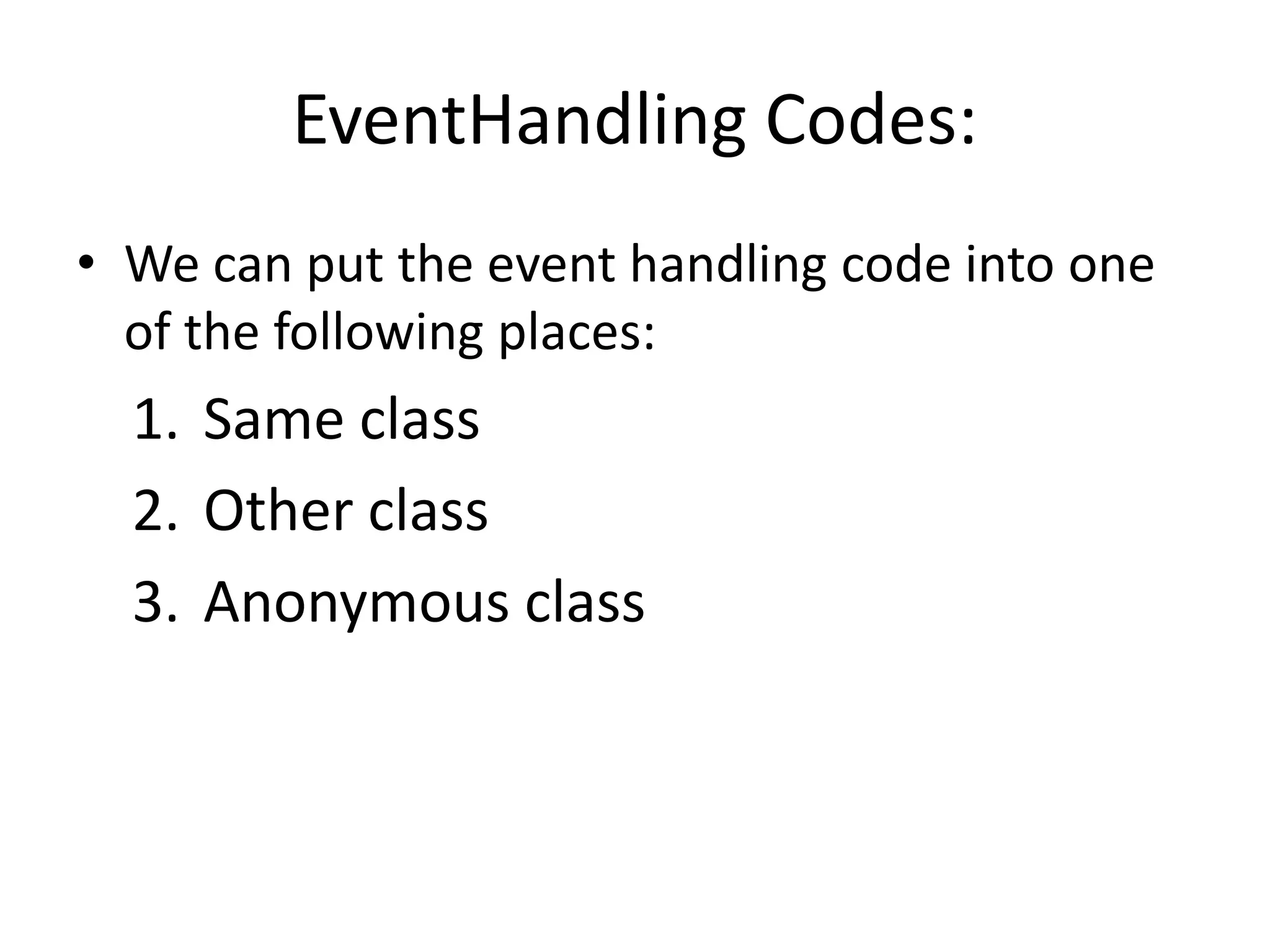
![Example of event handling within class: import java.awt.*; import java.awt.event.*; class AEvent extends Frame implem ents ActionListener{ TextField tf; AEvent(){ tf=new TextField(); tf.setBounds(60,50,170,20); Button b=new Button("click me"); b.setBounds(100,120,80,30); b.addActionListener(this); add(b);add(tf); setSize(300,300); setLayout(null); setVisible(true); } public void actionPerforme d(ActionEvent e){ tf.setText("Welcome"); } public static void main(St ring args[]){ new AEvent(); } }](https://image.slidesharecdn.com/javaawt-180310133848/75/object-oriented-programming-examples-14-2048.jpg)
![Example of event handling by Outer class: import java.awt.*; import java.awt.even t.*; class AEvent2 extend s Frame{ TextField tf; AEvent2(){ tf=new TextField(); tf.setBounds(60,50,1 70,20); Button b=new Button( "click me"); b.setBounds(100,120,80,30); Outer o=new Outer(this); b.addActionListener(o);//passi ng outer class instance add(b);add(tf); setSize(300,300); setLayout(null); setVisible(true); } public static void main(String args[]){ new AEvent2(); } }](https://image.slidesharecdn.com/javaawt-180310133848/75/object-oriented-programming-examples-15-2048.jpg)
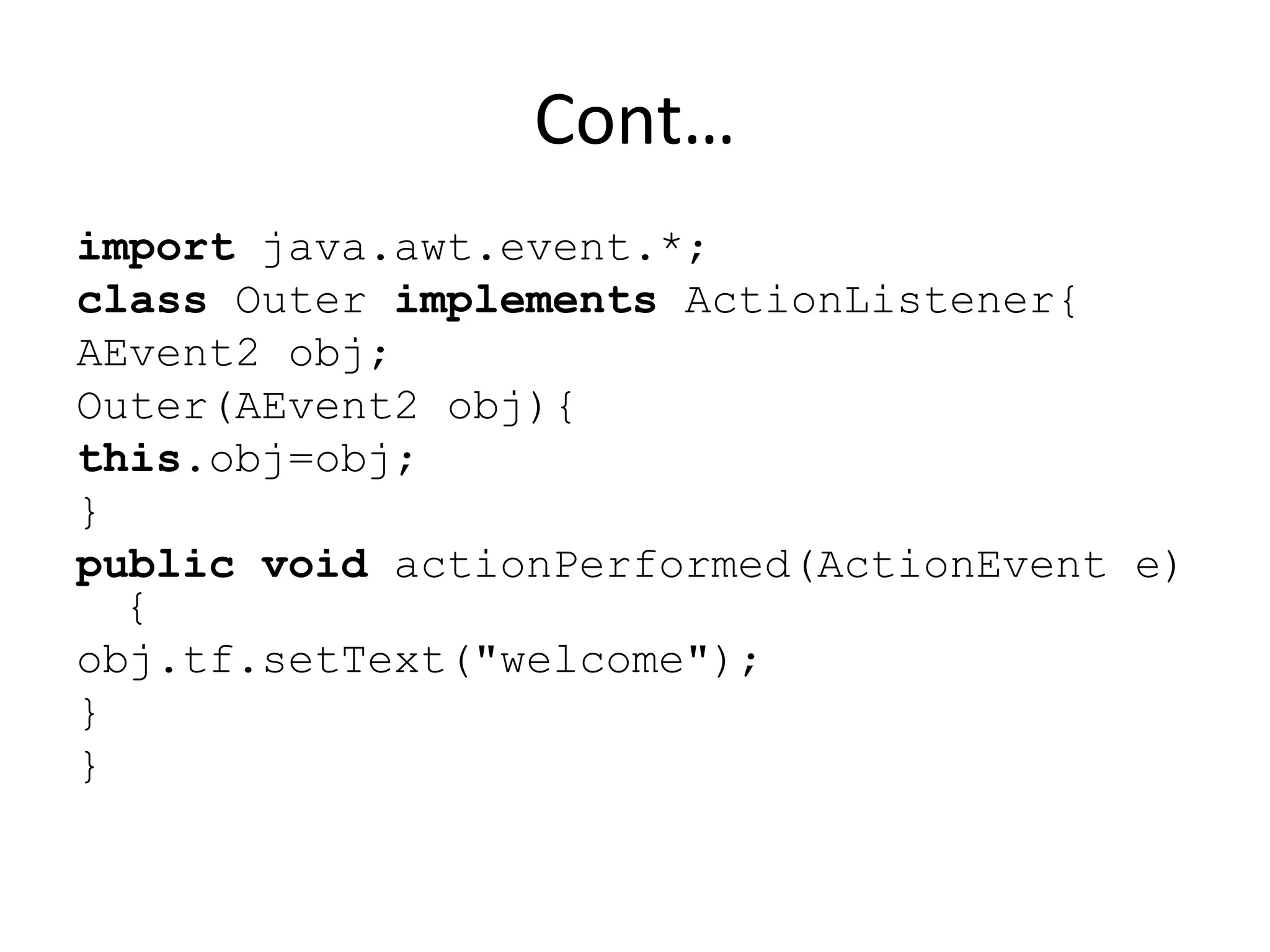
![Example of event handling by Annonymous class: import java.awt.*; import java.awt.event .*; class AEvent3 extends Frame{ TextField tf; AEvent3(){ tf=new TextField(); tf.setBounds(60,50,17 0,20); Button b=new Button(" click me"); b.setBounds(50,120,80 ,30); b.addActionListener(new Acti onListener(){ public void actionPerformed( ){ tf.setText("hello"); } }); add(b);add(tf); setSize(300,300); setLayout(null); setVisible(true); } public static void main(Stri ng args[]){ new AEvent3(); } }](https://image.slidesharecdn.com/javaawt-180310133848/75/object-oriented-programming-examples-17-2048.jpg)